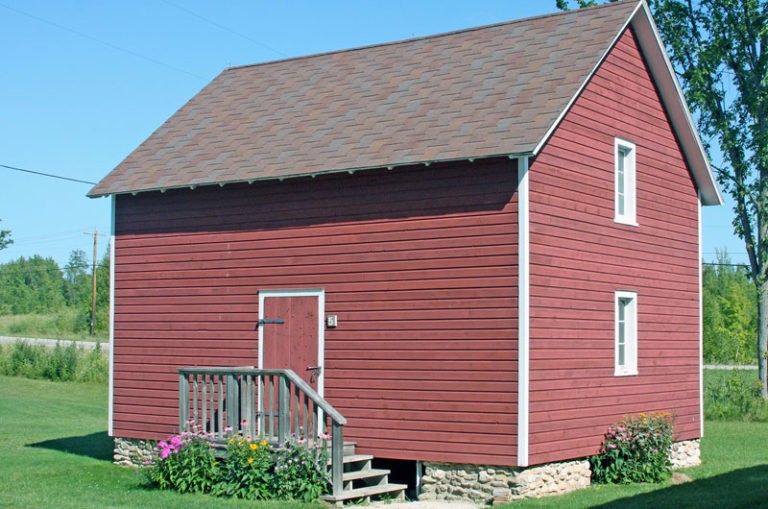Granary
Introduction
Text-to-speech Audio
The signature building of small-grain farming in the mid-west was the granary, where the grains from wheat, corn, oats, and other crops were stored. The building was typically built on some sort of concrete or stone foundation that raised the building off the ground — this provided ventilation underneath to help keep the grain dry, and to lessen the chance of rodent infestation.
Images
Granary

Backstory and Context
Text-to-speech Audio
The bulk of the grain was stored on the second floor and fed by chute to bins below, where it could then be bagged for sale, or taken out to the livestock on the farm. This granary was donated by Willard and Clarissa Kramer from their farm just a short distance up Fieldcrest Road. The previous owners of this farmland were the parents of Emma Anderson, who lived in the Anderson House on these grounds. When Emma’s parents died, she and her sister inherited the farm, and they sold it to the Kramers in 1949.
On display is a collection of vintage tools and farm equipment, including an 1868 fanning mill, corn shellers, a grape grinder, sheep shearers, a hand plow, potato planters, and many handmade tools. For one of the most ingenious, yet simple, pieces of equipment, check out the broom on the left-hand side as you enter the building.
Sources
Granary: https://sisterbayhistory.org/museum/the-granary/
https://sisterbayhistory.org/museum/the-granary/
